
Journal of the American College of Emergency Physicians Open
Scope & Guideline
Empowering Research and Practice in Emergency Care
Introduction
Aims and Scopes
- Clinical Practice and Management in Emergency Medicine:
The journal publishes research on clinical decision-making, management strategies, and treatment protocols in emergency settings, aiming to enhance patient outcomes and safety. - Emergency Medical Services (EMS) and Prehospital Care:
Research related to EMS practices, prehospital interventions, and the integration of emergency care within community health systems is emphasized, highlighting the critical role of EMS in patient care. - Population Health and Social Determinants of Health:
The journal addresses the impact of social determinants on health outcomes, focusing on vulnerable populations and the importance of equitable access to emergency care services. - Innovations in Emergency Medicine:
JACEP Open encourages submissions on novel technologies, procedural advancements, and evidence-based innovations that can improve the efficiency and effectiveness of emergency medical services. - Education and Training in Emergency Medicine:
The journal features studies on educational methodologies, training programs for emergency medicine professionals, and the development of competencies essential for effective emergency care. - Public Health Emergencies and Disaster Response:
Research related to responses to public health crises, disaster preparedness, and the role of emergency medicine in managing large-scale health emergencies is a core focus. - Pediatric Emergency Medicine:
The journal includes studies specifically addressing pediatric patients in emergency settings, emphasizing unique challenges and management strategies required for this population.
Trending and Emerging
- Telemedicine and Remote Care:
The surge in telemedicine research highlights its role in emergency care, particularly during the COVID-19 pandemic, showcasing its potential for improving access and patient management in emergencies. - Opioid Crisis and Substance Use Disorders:
Emerging themes around opioid use disorder, harm reduction strategies, and the role of emergency medicine in addressing substance use crises are increasingly prevalent, reflecting the urgent need for effective interventions. - Mental Health Emergencies:
Research focusing on the management of mental health crises in emergency departments is gaining traction, emphasizing the integration of mental health services into emergency care practices. - Health Equity and Social Justice:
There is a growing emphasis on health equity, with research addressing disparities in emergency care access and outcomes among marginalized populations, highlighting the need for systemic change. - Artificial Intelligence and Technology Integration:
The integration of AI and advanced technologies in emergency medicine, particularly in diagnostics and decision-making, is emerging as a significant trend, promising to enhance the efficiency and accuracy of emergency care. - Pediatric Emergency Medicine Innovations:
Innovative practices and research specifically targeting pediatric emergency care are on the rise, reflecting a commitment to improving outcomes for younger patients in emergency settings. - COVID-19 Impact Studies:
The ongoing analysis of COVID-19's impact on emergency departments, including patient flow, resource allocation, and care delivery, continues to be a prominent area of research, shaping future practices.
Declining or Waning
- Traditional Emergency Medicine Procedures:
There has been a noticeable decrease in the publication of studies focused solely on traditional emergency procedures, as the field shifts towards evidence-based practices and innovative technologies. - Basic Clinical Case Reports:
The frequency of basic clinical case reports has declined in favor of more comprehensive studies that examine broader trends, outcomes, and systematic reviews, reflecting a preference for impactful research. - Single-Center Studies:
Research limited to single-center experiences is being overshadowed by multicenter studies and collaborative research efforts, indicating a trend towards more generalizable findings and broader implications. - Basic Epidemiological Studies:
While epidemiological research remains important, there has been a shift towards more complex studies that integrate social determinants of health and health disparities, leading to a decline in simplistic epidemiological analyses. - Non-Evidence-Based Guidelines:
There is a waning interest in publishing non-evidence-based guidelines or recommendations, as practitioners increasingly seek data-driven insights to inform clinical practices.
Similar Journals

Eurasian Journal of Emergency Medicine
Advancing emergency care through global collaboration.Eurasian Journal of Emergency Medicine is a premier journal dedicated to advancing the field of emergency medicine. Published by GALENOS PUBL HOUSE, this renowned open-access journal has been at the forefront of disseminating critical research and innovative practices since its inception in 2003. With an ISSN of 2149-5807 and an E-ISSN of 2149-6048, it provides a platform for researchers, professionals, and students to share their findings and enhance their understanding of emergency medical practices. The journal's commitment to open access ensures that vital knowledge and research are available to a global audience, promoting collaboration and development within the field. As a valuable resource, the Eurasian Journal of Emergency Medicine plays a pivotal role in shaping contemporary emergency care, addressing pressing issues, and exploring advancements that benefit practitioners and patients alike.
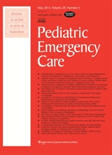
PEDIATRIC EMERGENCY CARE
Shaping the Future of Emergency Medicine for ChildrenPediatric Emergency Care, published by Lippincott Williams & Wilkins, serves as a vital resource within the fields of Emergency Medicine, Pediatrics, and Child Health. Established in 1985, this journal offers a platform for the dissemination of impactful research, offering critical insights for healthcare professionals dedicated to improving emergency care for children. With an impressive impact factor, it ranks in the Q2 category in Emergency Medicine and Pediatrics, highlighting its significance in advancing clinical practices and outcomes. Although not an open-access journal, it provides extensive access options to ensure the research is available to a broad spectrum of readers. The journal's rigorous standards and commitment to excellence make it an essential tool for researchers, practitioners, and students aiming to stay at the forefront of pediatric emergency care advancements.

Open Access Emergency Medicine
Connecting researchers to the forefront of emergency healthcare.Open Access Emergency Medicine, published by DOVE MEDICAL PRESS LTD, is a premier journal dedicated to the dynamic fields of Emergency Medicine and Emergency Nursing. With its ISSN 1179-1500, this journal has established a notable presence since its inception as an Open Access platform in 2010, offering unrestricted access to high-quality research and innovative practices in the area. As one of the leading journals in its field, it holds a respectable Q2 ranking in both Emergency Medicine and Emergency Nursing categories as of 2023, reflecting its commitment to advancing knowledge and fostering impactful research. The journal is indexed in prestigious databases with solid Scopus rankings, placing it in the 65th percentile for Emergency Medicine and the 64th percentile for Emergency Nursing, ensuring that contributions reach a diverse audience of researchers, practitioners, and students worldwide. With its focus on contemporary issues, this journal serves as an essential resource for the continual growth and development of emergency health services.
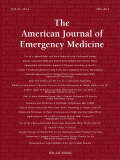
AMERICAN JOURNAL OF EMERGENCY MEDICINE
Empowering Clinicians with Cutting-Edge ResearchThe American Journal of Emergency Medicine, published by W B Saunders Co-Elsevier Inc, stands as a premier platform for the dissemination of high-quality research in the field of emergency medicine. With the ISSN 0735-6757 and E-ISSN 1532-8171, this esteemed journal features contributions that shape clinical practices and enhance patient care in urgent medical scenarios. Since its inception in 1983, the journal has garnered a notable Q1 ranking in Emergency Medicine and a Q2 ranking in Medicine (miscellaneous) for 2023, reflecting its significant impact in the field, as denoted by its Scopus rank of 12 out of 109, placing it in the 89th percentile. Researchers and practitioners alike benefit from the rigorous peer-review process, ensuring that only impactful studies are published, even as the journal maintains a non-open access model, allowing for selective availability of pioneering research. By fostering academic dialogue and advancing knowledge, the American Journal of Emergency Medicine plays a crucial role in addressing the dynamic challenges faced by healthcare professionals in emergency settings.
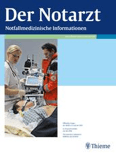
Notarzt
Advancing critical care knowledge for a healthier tomorrow.Notarzt is a well-regarded academic journal published by GEORG THIEME VERLAG KG, focusing on critical care, intensive care medicine, and emergency medicine. With an ISSN of 0177-2309 and an E-ISSN of 1438-8693, this German-based journal has been contributing to the medical field since its inception in 1985. Despite being categorized in the Q4 quartile for both Critical Care and Intensive Care Medicine and Emergency Medicine, Notarzt continues to provide a platform for innovative research, case studies, and developments that inform practitioners and researchers alike. With a publication history spanning significant years such as 1993 and 1999 to 2024, Notarzt is dedicated to improving outcomes in emergency and critical care settings through the dissemination of pivotal findings and comprehensive reviews. Although currently not an Open Access journal, it remains an essential resource for professionals striving to stay abreast of developments in their field.

African Journal of Emergency Medicine
Elevating Standards in Emergency Medicine ResearchAfrican Journal of Emergency Medicine, published by ELSEVIER, serves as a pivotal platform for disseminating innovative research and advancements in emergency medicine and critical care nursing. Launched in 2011, this Open Access journal has quickly garnered attention for its commitment to enhancing healthcare delivery across Africa, catering to a diverse audience of researchers, practitioners, and students. With an impressive rank of #44/109 in Emergency Medicine and positioning itself in the Q2 category for Critical Care Nursing and Emergency Nursing in 2023, the journal has established itself as a significant contributor to the medical community. The journal encourages the submission of high-quality research, reviews, and case reports that can inform clinical practices and emergency protocols across the continent. Its accessibility, reflected by its open access model, ensures that vital findings are available to those who need it most, thus fostering greater collaboration and innovation in emergency healthcare. With a focus on improving patient outcomes and advancing the field, the African Journal of Emergency Medicine is an essential resource for all who are committed to emergency care and related disciplines.

Annales Francaises de Medecine d Urgence
Enriching the Future of Urgent CareAnnales Françaises de Médecine d'Urgence is a prominent journal dedicated to the field of Emergency Medicine, published by LAVOISIER. With an ISSN of 2108-6524 and E-ISSN of 2108-6591, this journal aims to disseminate vital research and innovative practices pertinent to emergency care, addressing the dynamic challenges faced by healthcare professionals in acute medical settings. While it operates under a non-open access model, it maintains an important role in advancing knowledge in the discipline, evidenced by its categorization in 2023 as Q4 in Emergency Medicine with a Scopus ranking of #85 out of 109, placing it in the 22nd percentile. Spanning years from 2011 to 2024, this journal serves as a platform for researchers, practitioners, and students committed to improving patient outcomes and advancing the science of emergency medicine. With its thoughtfully curated articles and studies, Annales Françaises de Médecine d'Urgence is a crucial resource for anyone who aims to stay at the forefront of developments in emergency medical care.

Prehospital and Disaster Medicine
Shaping the Future of Emergency ResponsePrehospital and Disaster Medicine is a leading peer-reviewed journal published by Cambridge University Press that targets the ever-evolving fields of emergency medicine and disaster management. With an ISSN of 1049-023X and an E-ISSN of 1945-1938, this journal has established its significance within the academic community since its inception, with coverage extending from 1985 to the present. It is widely recognized within its category as evidenced by its 2023 rankings, which position it in the Q2 quartile for both Emergency Medicine and Emergency Nursing. The journal boasts impressive Scopus rankings, standing at Rank #7/32 in Emergency Nursing and Rank #31/109 in Emergency Medicine, demonstrating its relevance and impact in these critical areas. Although it does not offer Open Access, Prehospital and Disaster Medicine is committed to disseminating vital research and innovative practices that address prehospital care, disaster response, and the intersection of these fields, serving as an essential resource for researchers, professionals, and students alike.
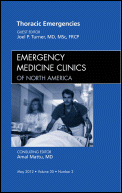
EMERGENCY MEDICINE CLINICS OF NORTH AMERICA
Transforming Emergency Medicine Through ResearchEMERGENCY MEDICINE CLINICS OF NORTH AMERICA, published by W B SAUNDERS CO-ELSEVIER INC, stands at the forefront of the field of emergency medicine, providing a vital platform for interdisciplinary research and clinical insights. With an ISSN of 0733-8627 and E-ISSN 1558-0539, this journal has been a cornerstone for emergency medicine professionals since its inception in 1983 and continues to publish annually through 2024. The journal's impact is reflected in its 2023 Scopus ranking, where it is positioned #42 out of 109 in the emergency medicine category, securing a respectable Q2 quartile status. Although it does not offer open access at this time, its commitment to advancing emergency medicine knowledge is evident through its rigorously peer-reviewed articles that address critical clinical practices, evolving technologies, and important case studies. As a resource for researchers, practitioners, and students alike, EMERGENCY MEDICINE CLINICS OF NORTH AMERICA invites you to explore the latest trends and developments in this essential field of healthcare.
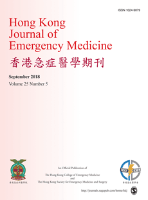
Hong Kong Journal of Emergency Medicine
Empowering Practitioners with Vital InsightsThe Hong Kong Journal of Emergency Medicine, published by WILEY, stands as a vital resource in the field of Emergency Medicine since its inception in 2004. With a commitment to advancing clinical practice and research, this open access journal—transitioned to open access in 2018—facilitates the dissemination of crucial knowledge among healthcare professionals and researchers, fostering a collaborative environment for addressing urgent medical challenges. The journal boasts an impressive impact factor and holds a Q2 ranking in the Emergency Medicine category for 2023, reflecting its significance and influence within the academic community. Located in Hong Kong, this journal aims to explore a broad spectrum of topics related to emergency and critical care, making it an essential publication for those seeking to enhance their understanding and practice in this fast-evolving field. Accessible through ISSN: 1024-9079 and E-ISSN: 2309-5407, it promises to be an invaluable asset for researchers, practitioners, and students alike.